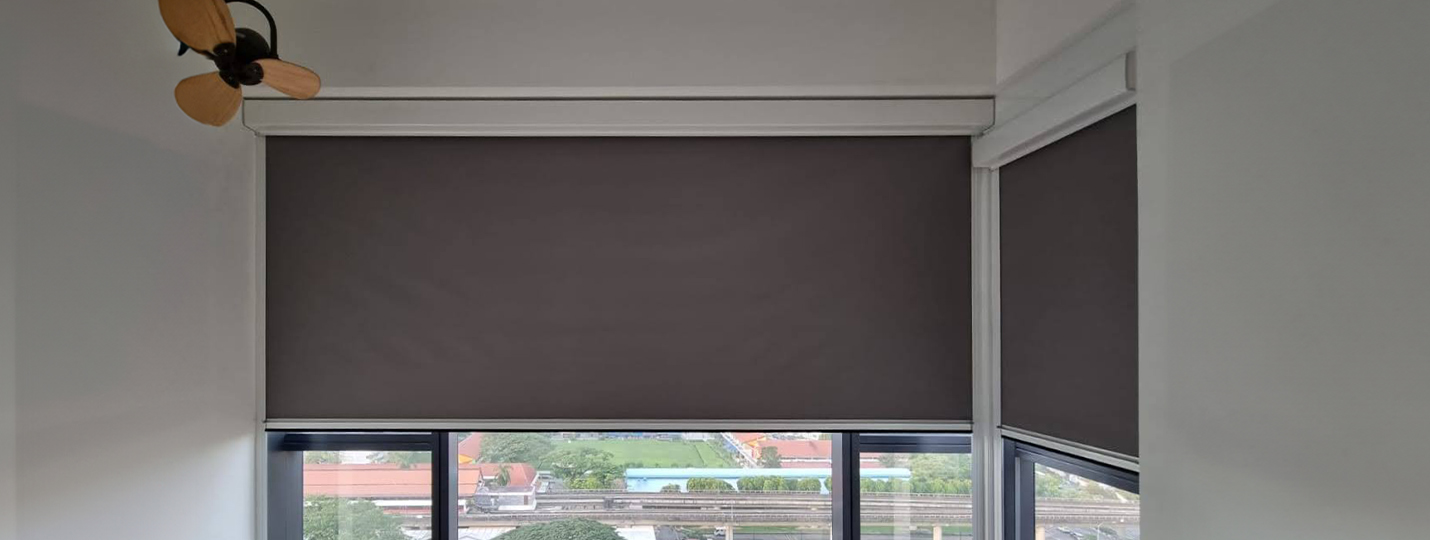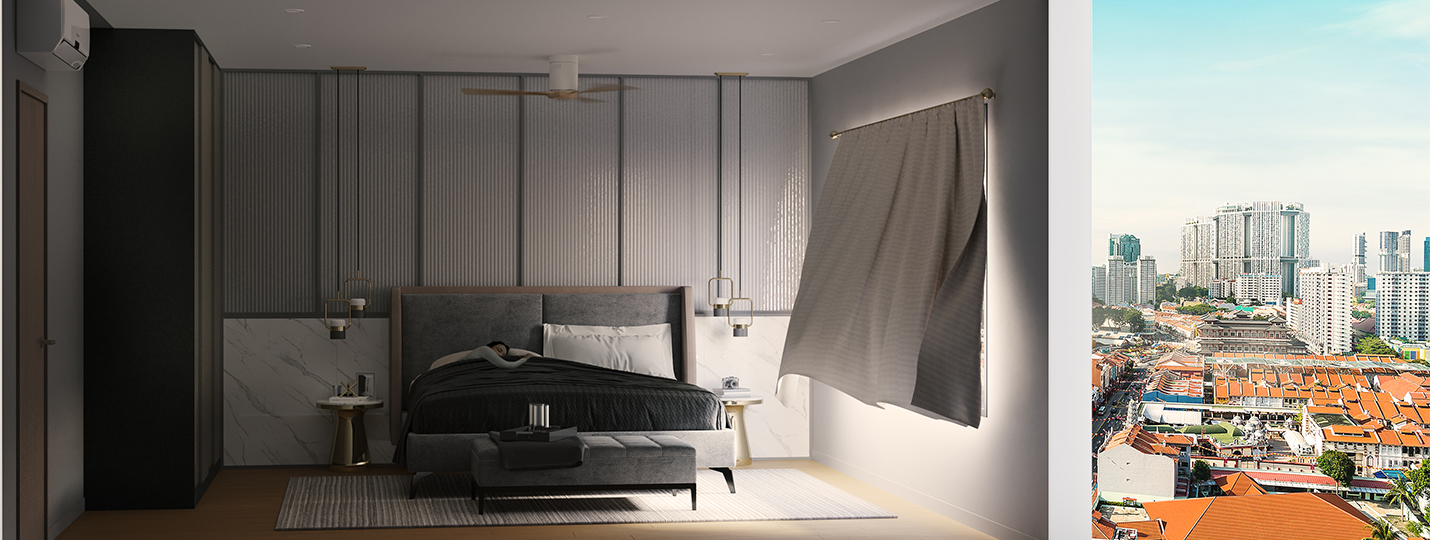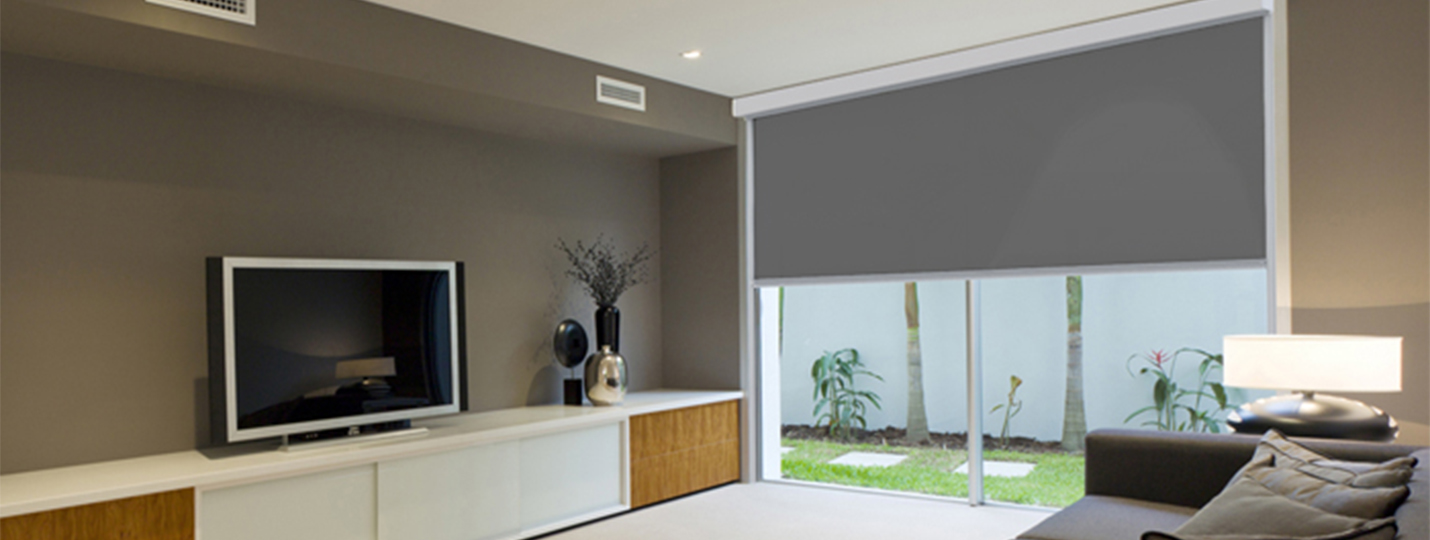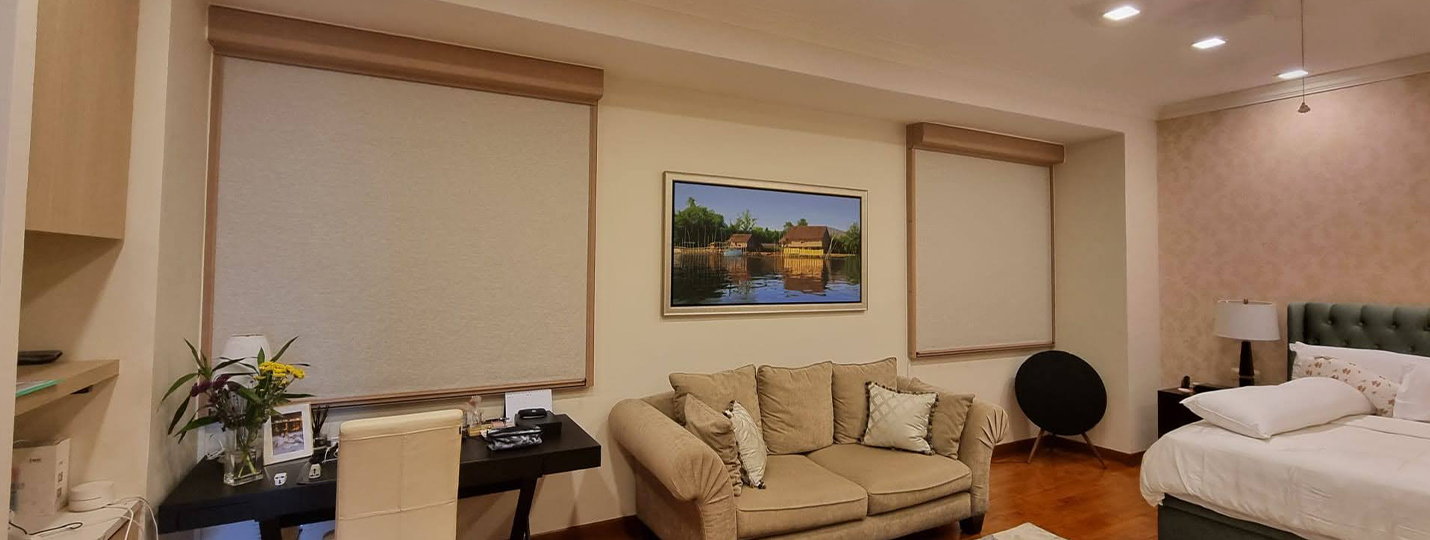Controlling natural light is a common concern for homeowners. Having the right interior shades helps to improve comfort, privacy, and even create energy efficiency.
With the right solution, you can keep rooms cooler during the hottest parts of the day, darken a nursery to help young ones sleep better, or even reduce glare for the perfect home theatre experience.
Two of the most popular solutions for light control today are blackout blinds and blackout curtains. While both serve a similar purpose, they differ in how they look, function and perform.
So, which option is right for your home? In this article, we’ll help you answer that by covering how the two options compare in various ways, from aesthetics to performance.

The basics of blackout blinds and blackout curtains
Both blackout blinds and blackout curtains fall under the category of blackout window treatments. This refers to window treatments designed to minimise or even completely block light from entering a space.
Blinds are typically made from opaque materials like fabrics, mounted tightly against a window, often within a track or cassette system. A good example of this would be Ziptrak® Interior Blinds, which are among the most effective light-blocking blinds available today. These feature a custom-fit, track-guided installation, featuring high-performance fabrics, to achieve complete blackout.
On the other hand, curtains are usually made from thick and layered fabrics that absorb or even block out sunlight. Because of the way curtains are constructed, however, achieving a full blackout effect often requires extra accessories, such as curtain pelmets.

Total light blocking: blinds vs. curtains
Blinds that can block out light generally outperform curtains when it comes to total light exclusion. Ziptrak® Interior Blinds, for instance, use a patented track-guided system designed specifically for this.
Combined with the brand’s high-opacity BlackOut Fabrics, these blinds can effectively block out all light, making them ideal for spaces like nurseries or home theatre rooms. The tight seal achieved by the track-guided system even ensures complete darkness in the middle of the day.
In comparison, the best blackout curtains will often fall short of high-performance blinds. That’s because curtains typically allow some light in through gaps and edges, unless paired with less common accessories like ceiling-mounted (instead of wall-mounted) tracks and overlap returns.

Space efficiency for interiors
Curtains can also require more space when it comes to installation. They naturally require more room to drape and stack when opened, with floor-to-ceiling installations taking up quite a bit of space. In irregularly shaped or small rooms, blackout curtains can be especially tricky to install.
Ziptrak® Interior Blinds offer a sleek, compact alternative. When retracted, they can even tuck neatly into an optional slim pelmet or headbox that keeps them out of sight.
This makes Ziptrak® Interior Blinds ideal for small rooms or windows where curtain clearance is limited. The blinds also offer a more streamlined, polished look in most settings.

Style and aesthetics
If you prefer a more traditional-looking home, curtains may be a better fit. They offer a soft, layered look that suits classic interiors or spaces where a cosier aesthetic is preferred.
However, they can appear a little outdated in homes styled with more modern touches, which is where blinds may be a better choice.
Specifically, blinds may be preferable for those who are looking for a more refined, contemporary, or minimalist aesthetic. Ziptrak® Interior Blinds are particularly well-suited for modern spaces, with clean lines and concealed fittings that enhance their sleek appearance.
It’s also worth noting that some blinds – like Ziptrak® – can be customised. Many homeowners choose these blinds in specific prints, tones, or textures to better match their home interiors.

Ease of maintenance
Blackout blinds, such as Ziptrak® Interior Blinds, require very little maintenance. Their fabrics have been designed to resist moisture and mould, and can be cleaned with a simple, damp cloth.
Blackout curtains, on the other hand, usually require removal for professional dry-cleaning or machine washing. Curtain fabrics also tend to trap dust, pet hair, and allergens, and are more likely to shrink or even wear out from repeated washing.
This makes blackout blinds a more convenient option for those looking to minimise upkeep. This is also why a lot of the people selecting these blinds are ones with busy households, or families with pets and children.

Reliability and longevity
The best brands for either window treatment should be made to last for years. High-quality blackout curtains can be long-lasting, just like Ziptrak® Interior Blinds.
The difference lies in the upkeep required to maintain them. Ziptrak® Interior Blinds are durable and low-maintenance, needing little attention beyond occasional cleaning.
They also use a patented side spline system that keeps the blind fabric taut and secure, reducing the risk of sagging and warping without manual adjustment.
In comparison, curtains demand more effort and controlled conditions to maintain their condition. Their performance can also decline over time as they thin out from regular washing – an issue you won’t encounter with Ziptrak® Interior Blinds.
Which option should you choose?
Ultimately, the best blackout window treatment depends on your needs. Consider how you use the space, the level of darkness you want to achieve, your willingness to maintain the treatment, and the overall look you want for the area.
Answering these questions can help you decide if blinds or curtains are the better option for you. And if you’re leaning towards Ziptrak® Interior Blinds, get in touch with us.
Our team at ClimaShield Solutions can show you the blinds in person at our showroom and walk you through the wide variety of fabric and colour options. Speak with us today to get started!

